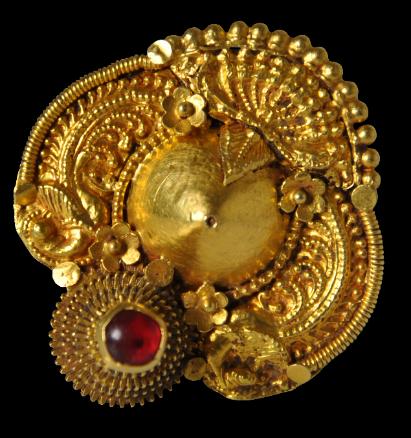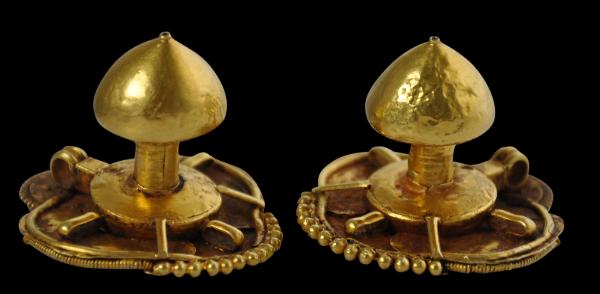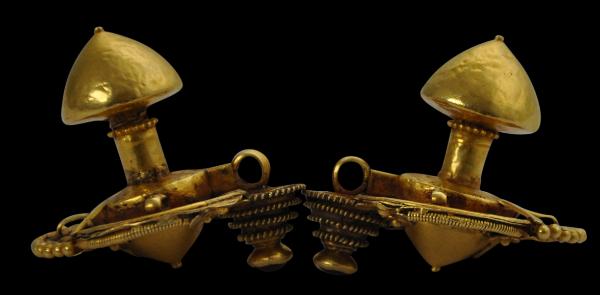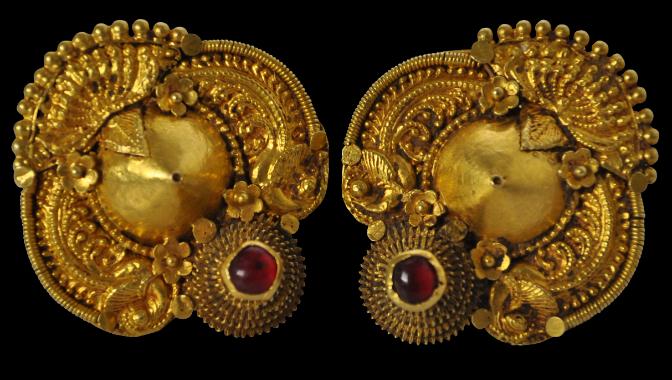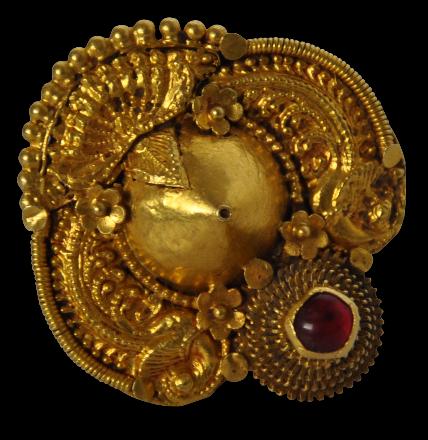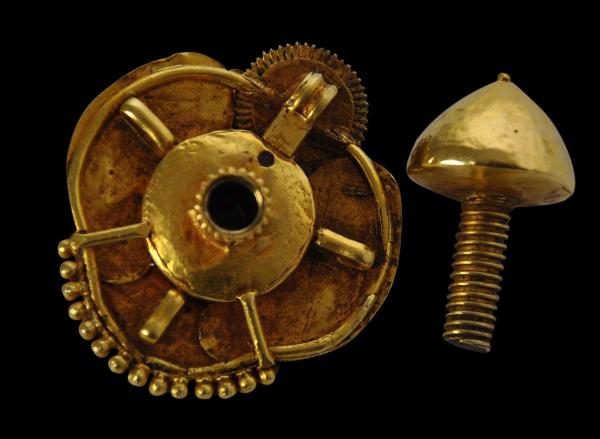
Pair of Large Gold Earrings, Bangalore, Karnataka, South India, 19th century
Pair of Large Gold Earrings
Bangalore, Karnataka, South India
19th century
height (each) 3.8cm, width: 3.4cm, combined weight: 30g
This superb and elaborate pair of earing studs are of solid, high-grade gold. Each has been set with a red stone or glass cabochon. The motifs – pairs of bird with long tails, or peacocks – have been constructed from chased and stamped elements. These are arrayed around a central plain gold cone. The red stones have high box settings on top of tiers with serrated edging. The tops of the earrings are decorated with granule applique work.
The backs have gold rib supports and large posts with screw-in gold domed plugs (which most probably have a lac core). Small rings present might have had chains attached or at least the option to have chains attached which might have gone of over the tips of the ears to provide further supports of the earrings.
Similar examples are illustrated in Untracht (1997, p. 452).
Gold is imbued with a spiritual component in much of India. It is a symbol of the sun and also associated with Lakshmi, the goddess of wealth. Indians, rich or poor, all tried to have at least a small quantity of gold even if just a simple pair of earrings, for gold was coveted. And traditionally, Hindus would place a small piece of gold in the mouth of the departed as a symbol of the immortality of the soul and as payment to Yama, the god of death, for shepherding the soul to the hereafter (Bala Krishnan et al, 2005, p. 17).
According to Ollemans (2013), the kings of India were believed to be descended from the gods and they paid extravagant tribute to the deities by decorating them with gold and other precious materials. Deities were humanised: they were bathed and fed as if they were living beings, and adorned with all manner of jewellery. The more a deity wore, the more powerful and sacred it became. Once the deities were so embellished and humanised, then the kings ordered extravagant gold jewellery for themselves that mirrored the deities, thereby elevating themselves to the level of the deified. The demand for gold was immense and the goldfields of India were exhausted so that gold needed to be imported from beyond the subcontinent.
The earrings here are in fine condition with no obvious losses and no repairs. They have a fine patina and clear and obvious age.
References
Aitken, M.E., When Gold Blossoms: Indian Jewelry from the Susan L. Beningson Collection, Asia Society & Philip Wilson Publishers, 2004.
Bala Krishnan, U.R. et al, Icons in Gold: Jewelry of India from the Collection of the Musee Barbier-Mueller, Somogy, 2005.
Ollemans, S., ‘Of gold, gods and men: jewellery in India’, in Arts of Asia, November-December 2013.
Untracht, O., Traditional Jewelry of India, Thames & Hudson, 1997.
Provenance
UK art market
Inventory no.: 3867
SOLD

